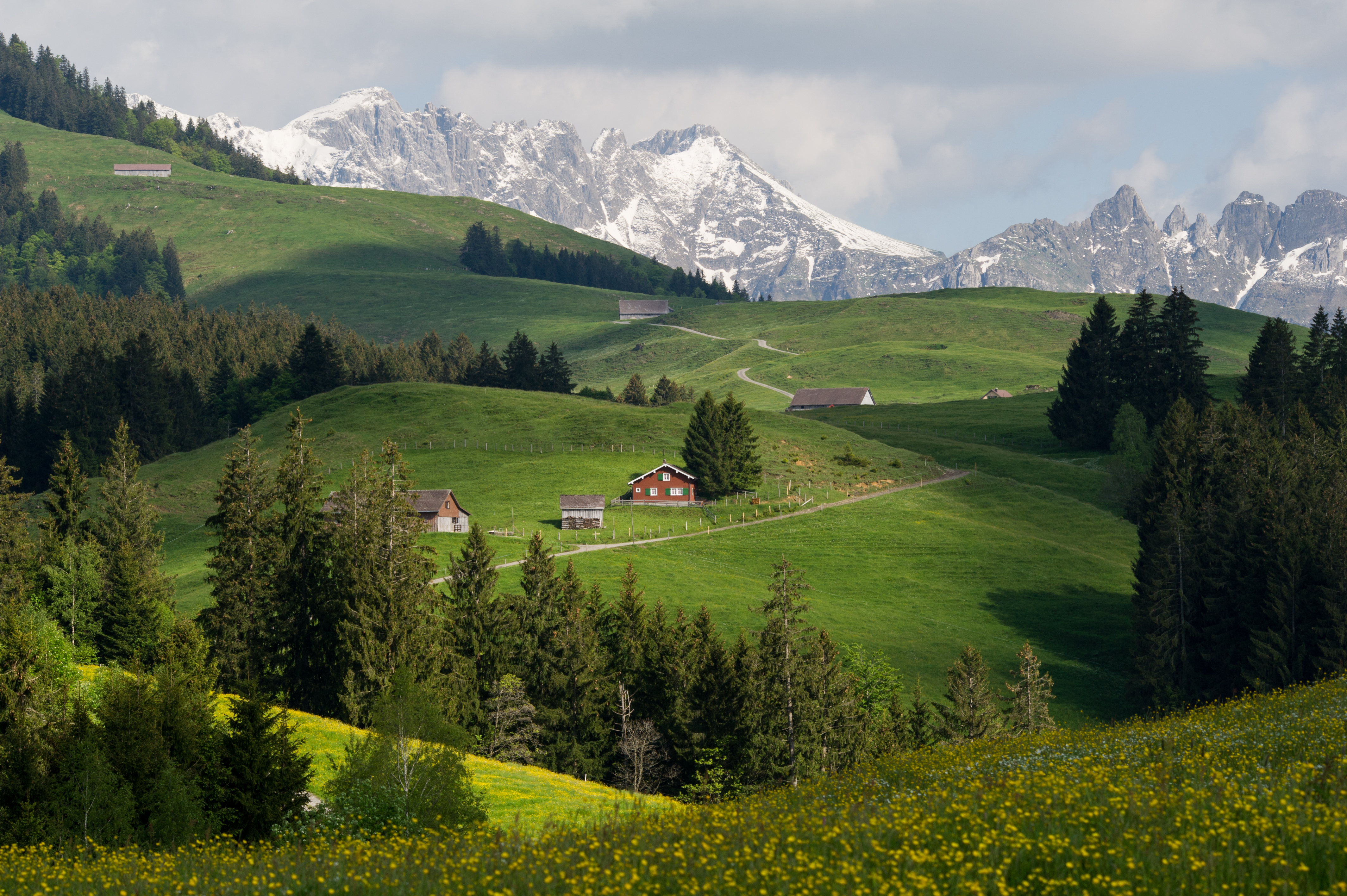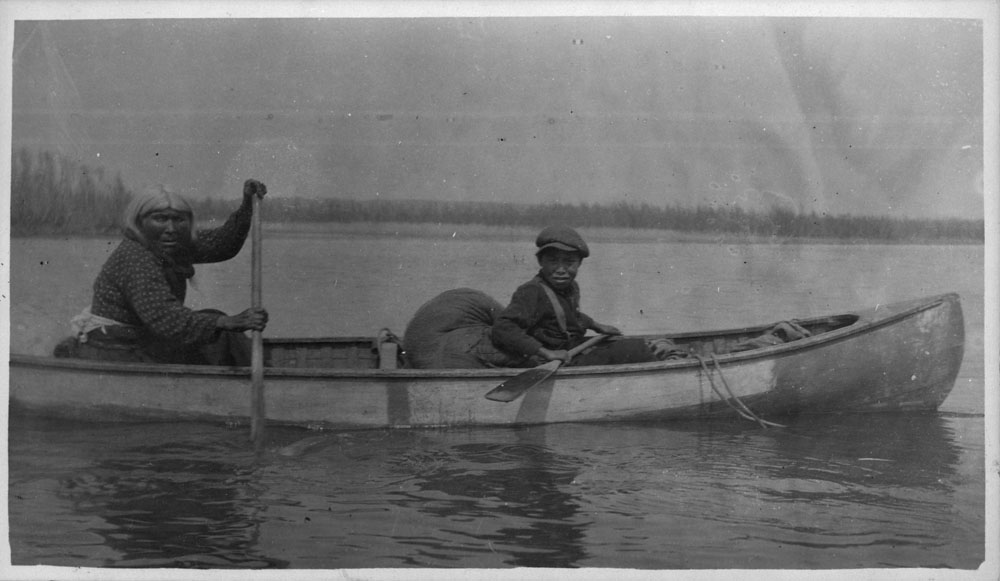|
Saoyú-ʔehdacho
Saoyú-ʔehdacho (also known as Sahoyue-Edacho, Sahoyúé-§ehdacho, Saoyú and Æehdacho and Grizzly Bear Mountain and Scented Grass Hills) is a cultural landscape in the Northwest Territories, Canada, comprising two peninsulas in Great Bear Lake. The site has great cultural and spiritual significance for the Sahtu people, as it is considered sacred land and it features prominently in their oral histories. Natural and cultural heritage Saoyú-ʔehdacho is in size, approximately the size of the province of Prince Edward Island, and consists of two peninsulas: Saoyú (Grizzly Bear Mountain) and ʔehdacho (Scented Grass Hills). The peninsulas are both characterized by flat summits, approximately above sea level respectively. The perimeters of both promontories feature a series of raised beaches, formed by the post-glacial rebound, which contain the majority of the known evidence of human occupation of the lands, including archaeological resources related to pre-contact occupat ... [...More Info...] [...Related Items...] OR: [Wikipedia] [Google] [Baidu] |
Great Bear Lake
Great Bear Lake (; ) in the boreal forest of Canada is the largest List of lakes of Canada, lake entirely in Canada (Lake Superior and Lake Huron are larger but straddle the Canada–United States border, Canada–US border), the fourth-largest in North America, and the List of lakes by area, eighth-largest in the world. The lake is in the Northwest Territories, on the Arctic Circle between 65th parallel north, 65 and 67th parallel north, 67 degrees of northern latitude and between 118th meridian west, 118 and 123rd meridian west, 123 degrees western longitude, Height above mean sea level, above sea level. The name originated from the Chipewyan language, Chipewyan word , meaning "grizzly bear-water people". The Sahtu, a Dene people, are named after the lake. Grizzly Bear Mountain, or ''Sahoyue'', on the shore of the lake also comes from Chipewyan, meaning "bear-large hill".Johnson, LThe Great Bear Lake: Its Place in History. Calgary, Alberta: ''Arctic Institute of North Americ ... [...More Info...] [...Related Items...] OR: [Wikipedia] [Google] [Baidu] |
Sahtu People
The Sahtú or North Slavey (historically called ''Hare'' or ''Hareskin Indians'') are a Dene First Nations people of the Athabaskan-speaking ethnolinguistic group living in the vicinity of Great Bear Lake (''Sahtú'', the source of their name), Northwest Territories, Canada. The Sahtú peoples live in Colville Lake, Deline, Fort Good Hope, Norman Wells and Tulita which form the Sahtu Region of the NWT. The Dene of the region are represented by the Sahtu Dene Council who, in 1993, signed the Sahtu Dene and Metis Comprehensive Land Claim Agreement. Sahtú groups include the ''Hare Dene'' (K'ahsho Got'ine District, today: Colville Lake and Fort Good Hope), ''Bear Lake Dene'' (Déline District), and ''Mountain Dene'' (Tulit'a District). They call themselves also ''Ɂehdzo Got’ı̨ne'' (Trap People). Ethnography An early description of Sahtú cultures is given in Alexander Mackenzie's journal of his voyage down the Mackenzie River to the Arctic Ocean in 1789. Although ... [...More Info...] [...Related Items...] OR: [Wikipedia] [Google] [Baidu] |
Historic Sites And Monuments Board Of Canada
National Historic Sites of Canada () are places that have been designated by the federal Minister of the Environment on the advice of the Historic Sites and Monuments Board of Canada (HSMBC), as being of national historic significance. Parks Canada, a federal agency, manages the National Historic Sites program. As of November 2023, there were 1,005 National Historic Sites, 171 of which are administered by Parks Canada; the remainder are administered or owned by other levels of government or private entities. The sites are located across all ten provinces and three territories, with two sites located in France (the Beaumont-Hamel Newfoundland Memorial and Canadian National Vimy Memorial). There are related federal designations for National Historic Events and National Historic Persons. Sites, Events and Persons are each typically marked by a federal plaque of the same style, but the markers do not indicate which designation a subject has been given. For example, the Rideau ... [...More Info...] [...Related Items...] OR: [Wikipedia] [Google] [Baidu] |
Northwest Territories
The Northwest Territories is a federal Provinces and territories of Canada, territory of Canada. At a land area of approximately and a 2021 census population of 41,070, it is the second-largest and the most populous of Provinces and territories of Canada#Territories, the three territories in Northern Canada. Its estimated population as of the first quarter of 2025 is 45,074. Yellowknife is the capital, most populous community, and the only city in the territory; its population was 20,340 as of the 2021 census. It became the territorial capital in 1967, following recommendations by the Carrothers Commission. The Northwest Territories, a portion of the old North-Western Territory, entered the Canadian Confederation on July 15, 1870. At first, it was named the North-West Territories. The name was changed to the present Northwest Territories in 1906. Since 1870, the territory has been divided four times to create new provinces and territories or enlarge existing ones. Its current ... [...More Info...] [...Related Items...] OR: [Wikipedia] [Google] [Baidu] |
National Parks Act (Canada)
The ''Canada National Parks Act'' () is a Canadian Law of Canada, federal law that regulates protection of natural areas of national significance. As of March 2019, the ''Canada National Parks Act'' extended federal protection to 47 national parks and park reserves across the country covering more the 300,000 km2 of habitat. The current ''Canada National Parks Act'' received royal assent on October 20, 2000 and has been amended since. The first national parks act in Canada was created in 1887 shortly following the creation of the world's first national park, Yellowstone National Park, in the United States. In 1911, under a renewed national parks act, Canada became the first country in the world to establish their own national parks service. Over the course of its history, the predecessor ''National Parks Act'' struggled to define the primary intention of national parks by trying to balance parks as places both of conservation and public leisure. Remarks made by the Canadian M ... [...More Info...] [...Related Items...] OR: [Wikipedia] [Google] [Baidu] |
Cultural Landscapes
Cultural landscape is a term used in the fields of geography, ecology, and heritage studies, to describe a symbiosis of human activity and environment. As defined by the World Heritage Committee, it is the "cultural properties hatrepresent the combined works of nature and of man" and falls into three main categories: # "a landscape designed and created intentionally by man" # an "organically evolved landscape" which may be a "relict (or fossil) landscape" or a "continuing landscape" # an "associative cultural landscape" which may be valued because of the "religious, artistic or cultural associations of the natural element." Historical development The concept of 'cultural landscapes' can be found in the European tradition of landscape painting. From the 16th century onwards, many European artists painted landscapes in favor of people, diminishing the people in their paintings to figures subsumed within broader, regionally specific landscapes.GIBSON, W.S (1989) Mirror of the E ... [...More Info...] [...Related Items...] OR: [Wikipedia] [Google] [Baidu] |
National Historic Sites In The Northwest Territories
National may refer to: Common uses * Nation or country ** Nationality – a ''national'' is a person who is subject to a nation, regardless of whether the person has full rights as a citizen Places in the United States * National, Maryland, census-designated place * National, Nevada, ghost town * National, Utah, ghost town * National, West Virginia, unincorporated community Commerce * National (brand), a brand name of electronic goods from Panasonic * National Benzole (or simply known as National), former petrol station chain in the UK, merged with BP * National Book Store, a bookstore and office supplies chain in the Philippines * National Car Rental, an American rental car company * National Energy Systems, a former name of Eco Marine Power * National Entertainment Commission, a former name of the Media Rating Council * National Motor Vehicle Company, Indianapolis, Indiana, USA 1900–1924 * National Radio Company, Malden, Massachusetts, USA 1914–1991 * National Supermarket ... [...More Info...] [...Related Items...] OR: [Wikipedia] [Google] [Baidu] |
Dene Peoples
The Dene people () are an Indigenous group of First Nations who inhabit the northern boreal, subarctic and Arctic regions of Canada. The Dene speak Northern Athabaskan languages and it is the common Athabaskan word for "people". The term ''"Dene"'' has two uses: Most commonly, ''"Dene"'' is used narrowly to refer to the Athabaskan speakers of the Northwest Territories in Canada who form the Dene Nation: the Chipewyan (Denesuline), Tłı̨chǫ (''Dogrib''), Yellowknives (T'atsaot'ine), Slavey (Deh Gah Got'ine or Deh Cho), Sahtu (Sahtúot’ine), and Gwichʼin (Dinjii Zhuh). ''"Dene"'' is sometimes also used to refer to all Northern Athabaskan speakers, who are spread in a wide range all across Alaska and northern Canada. The Dene people are known for their oral storytelling. Location Dene are spread through a wide region. They live in the Mackenzie Valley (south of the Inuvialuit), and can be found west of Nunavut. Their homeland reaches to western Yukon, and the nor ... [...More Info...] [...Related Items...] OR: [Wikipedia] [Google] [Baidu] |
Canada Gazette
The ''Canada Gazette'' () is the official government gazette of the Government of Canada. It was first published on October 2, 1841. While it originally published all acts of the Parliament of Canada, it later also published treaties, hearing and tribunals, proclamations and regulations, and various other official notices as required. At one time it contained information on bankruptcies. It has been administered by Public Works and Government Services Canada and the King's Printer for Canada since 1841. The ''Gazette'' is most often read to find new acts, regulations and proclamations. Legal status While not always widely read by the public, publication in the ''Gazette'' is considered official notice to all Canadians. After a regulation has been approved by the Privy Council Office and then the Cabinet of Canada, the regulation is published in the ''Gazette''. If a regulation has not been published in the ''Gazette'', a person cannot be convicted of the offence. Canada's pro ... [...More Info...] [...Related Items...] OR: [Wikipedia] [Google] [Baidu] |
Slavey Language
Slavey ( ; also Slave, Slavé) is a group of Athabaskan languages and a dialect continuum spoken amongst the Dene peoples of Canada in the Northwest Territories – or central Denendeh – where it also has official status.Northwest Territories Official Languages Act, 1988 (as amended 1988, 1991-1992, 2003) The languages are primarily written using a modified Latin script, with some using Canadian Aboriginal syllabics. In their own languages, these languages are referred to as: Sahtúgot’įné Yatı̨́ (spoken by the Sahtu, Sahtu Dene), K’ashógot’įne Goxedǝ́ (the Hare Dene dialect) and Shíhgot’įne Yatı̨́ (the Mountain dialect) in the North, and Dené Dháh (primarily by the Dene Tha' First Nation, Dene Tha' in Alberta), Dene Yatıé or Dene Zhatıé in the South. [...More Info...] [...Related Items...] OR: [Wikipedia] [Google] [Baidu] |
Protected Areas
Protected areas or conservation areas are locations which receive protection because of their recognized natural or cultural values. Protected areas are those areas in which human presence or the exploitation of natural resources (e.g. firewood, non-timber forest products, water, ...) is limited. The term "protected area" also includes marine protected areas and transboundary protected areas across multiple borders. As of 2016, there are over 161,000 protected areas representing about 17 percent of the world's land surface area (excluding Antarctica). For waters under national jurisdiction beyond inland waters, there are 14,688 Marine Protected Areas (MPAs), covering approximately 10.2% of coastal and marine areas and 4.12% of global ocean areas. In contrast, only 0.25% of the world's oceans beyond national jurisdiction are covered by MPAs. In recent years, the 30 by 30 initiative has targeted to protect 30% of ocean territory and 30% of land territory worldwide by 2030; t ... [...More Info...] [...Related Items...] OR: [Wikipedia] [Google] [Baidu] |




